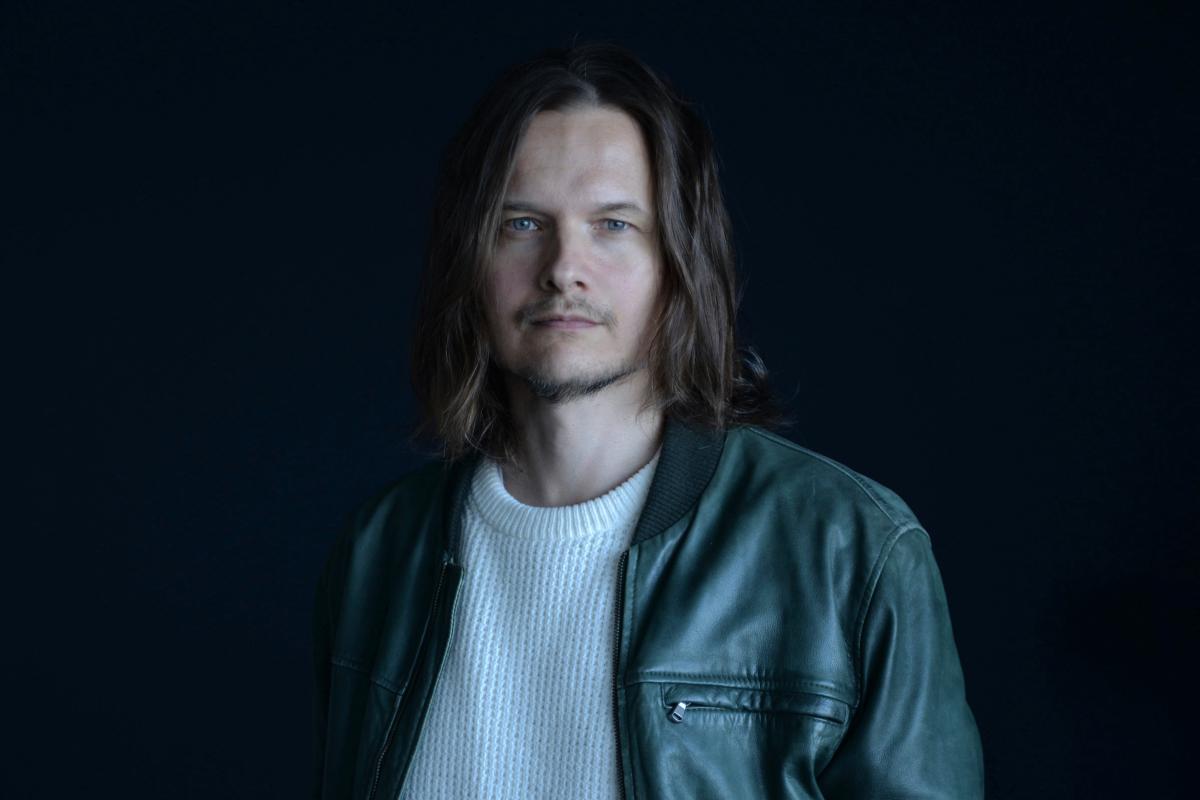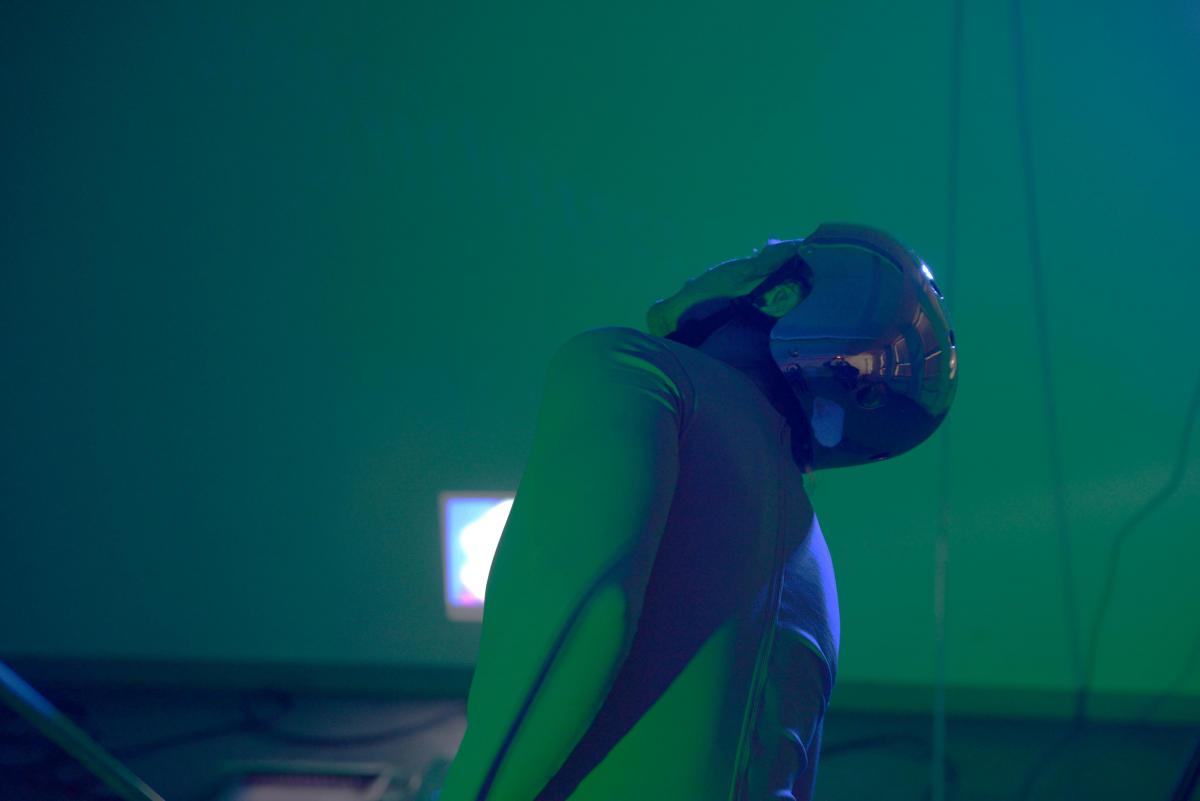New lecturer in dance performance will focus on artistic research oriented education
Read the interview of our newest lecturer Simo Kellokumpu, who will be focusing on bringing artistic research based knowledge to the MA programme in dance performance.

You have started your two-year tenure as a part-time lecturer in dance art this fall. A particular focus of your lectureship is to bring artistic research into the dance studies. How does this show up in your work in practice? What kind of courses or how do you teach?
My position takes place mainly in the MA programme of Dance Performance. My expertise lies in the choreographic relations between corporeality and materiality, perception and experience. Artistically, my knowledge lands into the fields of site-, place-, and context-responsive art genealogies with the queering amplification of these notions towards outer space, science fiction, and interplanetary imaginaries.
During the fall, I have for example facilitated a course titled Embodiments, Entanglements and Contemporary Conditions. In this course we explored the relationships of the above notions with texts from critical theory, which were combined with examples of artworks. One of the aims was to experiment with and discuss what the term ’contemporary’ means and does in terms of embodied artistic practices. We also looked at how processing the artistic material with/through a text differs from the approach in which the artistic work is based on it. What I mean by this is that the discursive text was experimented on as one material among others, instead of something to be illustrated by artistic work. The course included pondering on how the practice itself can produce its vocabulary and conceptualization. This is a way for me to introduce artistic research as a processual way of experimenting and generating performative material. In other words, how to engage with artistic research as an enmeshed dynamics between practice and theory, and not as a binary mode in which they are separated.
The week ended with sharing performance sketches, that were based on one of the texts, which we discussed during the course. The assignment was to experiment on how the thoughts, senses, imaginaries and affects, that the chosen text triggered, could be included in the performing body as well as the perceived proposal of the performance sketch. The goal of the course was to support the development of the students’ artistic practice through introducing materials that challenge the student’s thinking-making. The outcomes were very playful and poetic.
What kind of reception did you get from the students, and how has teaching felt for you so far?
Before this position I had already had good experiences as a visiting lecturer in the programme and my experience of the teaching this autumn has been empowering. The dialog with the students feels like a meaningful context for sharing the expertise that has been formed by my experience in the field as a choreographer and by my recent doctoral process. As the teaching is something that is simultaneously based on sharing this expertise and a continuous learning process for myself as well, it brings me joy.
What originally got you into artistic research?
It is a rather long story, but shortly after working a few years as a choreographer I started to ecologically re-question my artistic practice within the field of contemporary dance. This caused professional uncertainty even if I had chances and invitations to show my work. I reacted to this confusion by making (with the working groups) critical contextual pieces, which divided the domestic audiences strongly. At that time, roughly ten years ago, parallel to production-based making, I was also searching for an alternative ecosystem in which making art and sharing it with the audiences could happen.
The possibility to realize the research project in the Performing Arts Research Centre TUTKE was a chance to build understanding why my previously embodied artistic viewpoint flattened for me. The research process helped me to recognize that the way I used to operate and make choreographic art in the field was somehow an automatic response to a certain inherited and internalized artistic ecology and economy, which were based on constructions and categorising that I had to deconstruct urgently.
Through the years spent with exploring my questions, another kind of choreographic practice emerged. This “choreo-orientated” approach reaches until the infrastructural levels, for example when it comes to the ecology of the embodied practice and the contextualization of the artworks. Thus, the process had a fundamental impact to my practice. In a way I needed to re-invent the core of the choreographic thinking on which my works would be based on. Now my works exist and operate in another way in the field of contemporary art than they used to.
Could you briefly describe the observations brought up by your dissertation for those readers who are not so familiar with it?
Firstly, my project consisted of six examined choreographic works. Together they form two different artistic parts of the research. The first part was a cluster of A dance mat (2015-ongoing), Seasons as Choreographers: Where Over the World is Astronaut Scott Kelly? (2016), Hiding (2015), Mesh (2015), and A guest (2015/6). These works look into the choreographic relations between the body, the context, and the surrounding motional circumstances through the questions and practice of “place-taking”.

The second examined artistic part titled #CHARP (2017) was premiered in the Research Pavilion in the context of the 57thVenice Biennale. It was a choreographic work performed with artists and researchers Outi Condit, Paula Kramer and Vincent Roumagnac, and out of which I also developed and performed a solo version in other places later. Through this work, I continued to experiment on what happens choreographically, when the notion of site is expanded towards outer space, and when the body is transitioning from a geo-centered position to a speculative atmospheric condition.
Based on the peer-reviewed feedback, one of the main contributions of my process to the field of choreography is the conceptual and practical notion of ’choreoreading’. It emerged through exploring the embodied dynamics of writing and reading, western history of choreography and the etymology of the word ‘choreography’. To put it briefly, choreoreading practice is based on the understanding that every writer is a reader, and that writing and reading are simultaneously active bodily practices.
I started the research process by formulating the hypothesis that in the western history of choreography, the artistic“choreo-potential”, as I coined the term, of reading has been neglected in comparison to writing. My research project aimed to fulfill this gap. The primary dialogue partner for my artistic practice was the notion of hyper-reading (Sosnoski, 1999), which I developed in practice as a mode in which the body decodes those perceived and experienced kinesthetic fields and movements, with, within, and through which the body is taking place and place-taking. In the artistic process it is about working and moving intensively with simultaneously multidirectional sphere and with infra- and superstructures.
To sum up here, my doctoral project articulates what happens artistically when choreographer transforms into choreoreader and when choreographing translates into choreoreading. In this shift my understanding of the notions of movement, human body, and place-space go through a metamorphosis. When it comes to the form of the works, I moved from staged dance pieces towards choreographic performance installations. I see my doctoral research project as an introduction to the materials, orientations, and sensibilities with which I work now. I have described the process more closely in my online doctoral publication with all the artworks done.
The doctoral dissertation can be found here.
That’s intriguing, thank you. As a last question, I would like to go back to the topic of education. What do you find important in the education of dance performance now? And why is that?
In my experience there are many directions that students are interested in taking as artists. One challenge of the programme is how to respond to these possibly very different directions and needs in a sustainable way. Generally speaking from my perspective, I find it important to examine the questions of how and what kind of conditions does the contemporaneity set for bodily and embodied practices, how does the chosen context operate as a choreographic apparatus, and how to build skills as a performer to be able to critically contextualize all kinds of materials to be shared with the audience.
More broadly, I sense that I’m arriving to this programme at a time when there’s an interest and need to re-think how to combine training of students who are orientated in various ways; some towards collectives, some towards the company-based works and some towards working as autonomous dance/performance-makers in the trans-disciplinary field. For me this includes thinking and discussing what does the dynamics of these different orientations mean when it comes to for example the contents and intra-connections of, and with, the other curriculums in the University of the Arts.
In different times different topics, ideas, imaginaries, and materials emerge, circulate and are being re-cycled. With the students I pay attention into what kind of body is produced and proposed by for example manifold techno-ecological, gender-fluid, post- and other-than-human, digital, and postcolonial experiences of the world. More specifically I’m interested in discussing with the students of what kind of practice could simultaneously reach, open, possibly reroute, destabilize, and multiply the experiences and perceptions of this mesh, and create something unexpected.
To develop the awareness of one’s references is important. I encourage students to find and open them transparently. This way I want to support building understanding about ones’ own artistic work and perspective within the sustainable ethics of the art field. The dialogue-orientation of teaching is important also from the viewpoint of not making any expectations in advance about what kind of methods or materials work for each student. The work from my side starts from the dynamics of the openness and curiosity to support the artistic autonomy and space for options to appear and choices to be made. The substance and history of the experiential know-how as an artist and researcher then entangle with such a dialogue.
The major thing is to re-think the sensibilities that need to be fostered and developed in such a programme in the planetary and political situations and challenges in which artist education and artmaking takes place. In order to respond to the rather sad and overwhelming multi crisis era of 2020s and onwards, I think it is important to develop ways to facilitate a sustainable learning environment where one can recognize and name one’s questions, experiment the chosen bodily orientations and contextual relations through practice as well as share the outcomes and artworks in a critical and supportive space – to start with. I believe that this kind of dialogue and work can nourish and sustain hope.
Tanssitaiteen blogi
Tanssitaiteen blogi on perustettu alustaksi, jolla keskustella erilaisista tanssitaiteeseen ja sen tekemiseen liittyvistä kysymyksistä ja havainnoista. Blogin kirjoitusten kautta pääset tutustumaan tanssitaiteen opiskelun arkeen opiskelijoiden ja henkilökunnan näkökulmista, ja lukemaan ajoittain ilmestyviä opiskelijoiden ja opettajien haastatteluja.
Uusimmat julkaisut
Seuraa blogia